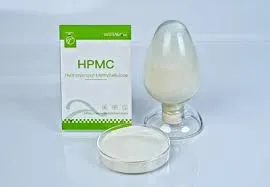
Ott . 31, 2024 12:41 Back to list
Understanding Hydroxyethyl Cellulose CAS Number and Its Applications in Various Industries
Understanding Hydroxyethyl Cellulose A Versatile Polymer
Hydroxyethyl cellulose (HEC) is a water-soluble polymer derived from cellulose, which is a naturally occurring carbohydrate obtained from plant cell walls. It is primarily known for its thickening, gelling, and stabilizing properties, making it a critical component in various industries, including pharmaceuticals, cosmetics, personal care, and even food processing. The Chemical Abstracts Service (CAS) number for hydroxyethyl cellulose is 9004-62-0, a unique identifier that provides essential information about its chemical makeup and properties.
HEC is produced by the etherification of cellulose with ethylene oxide, which introduces hydroxyethyl groups into the cellulose molecule. This modification enhances the solubility of cellulose in water, expanding its range of applications. The degree of substitution, which refers to the average number of hydroxyethyl groups introduced per glucose unit of cellulose, can be varied during production to modify the properties of HEC. This allows manufacturers to tailor the characteristics of HEC for specific applications.
One of the most prominent uses of hydroxyethyl cellulose is in the cosmetic and personal care industry. HEC is commonly found in shampoos, conditioners, lotions, and creams due to its ability to improve texture and enhance product stability. Its thickening properties not only provide a desirable viscosity but also help to suspend particles and stabilize emulsions, ensuring a uniform application and performance of these products.
In the pharmaceutical sector, HEC plays a vital role as a drug delivery agent. Its ability to form gels and films makes it an effective component in controlled-release formulations, ensuring that medication is delivered at a consistent rate over time. Additionally, HEC is utilized in the production of hydrogels, which offer a moist environment conducive to wound healing and tissue engineering.
hydroxyethyl cellulose cas number

The food industry also benefits from hydroxyethyl cellulose, where it functions as a thickener and stabilizer in various food products
. It helps maintain texture and viscosity in sauces, dressings, and dairy products, contributing to a more enjoyable sensory experience for consumers.Moreover, HEC is employed in construction and home improvement products such as wall paints and adhesives. Its thickening properties improve the spreadability and application of these products, while also enhancing their performance by preventing sagging.
environmental concerns related to synthetic polymers have led to increased interest in biodegradable alternatives. Given that hydroxyethyl cellulose is derived from a natural polymer, it is often regarded as a more environmentally friendly option compared to many synthetic alternatives.
In conclusion, hydroxyethyl cellulose, with its CAS number 9004-62-0, is a highly versatile polymer that finds applications across a wide range of industries. Its thickening, stabilizing, and gelling properties make it an invaluable ingredient in cosmetics, pharmaceuticals, food products, and construction materials. As industries continue to seek innovative and sustainable solutions, the importance of HEC is likely to grow, cementing its place as a crucial material in modern formulations.
-
Unlocking the Benefits of HPMC Products: A Gateway to Versatile Applications
NewsAug.07,2025
-
Unleashing the Potential of HPMC Ashland: A Comprehensive Look
NewsAug.07,2025
-
Tile Bonding Cellulose: The Key to Superior Adhesion and Durability
NewsAug.07,2025
-
Hydroxypropyl Methylcellulose Powder: The Versatile Component in Modern Pharmaceuticals
NewsAug.07,2025
-
Hydroxyethyl Cellulose: The Versatile Solution for Various Industries
NewsAug.07,2025
-
Hydroxyethyl Cellulose (HEC): The Versatile Polymer for Various Applications
NewsAug.07,2025







